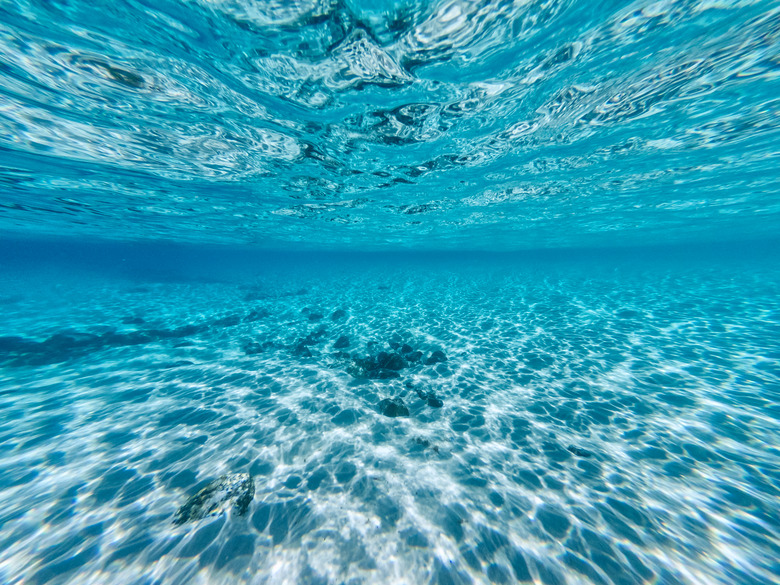Characteristics Of A Marine Biome
The marine biome is an environment characterized by the presence of salt water. The marine biome is found in all of Earth's oceans and is the largest biome in the world. The marine biome is home to an amazing array of living organisms, from the enormous blue whale to microscopic cyanobacteria.
Marine Biome Climate
Marine Biome Climate
The average water temperature of the marine biome is 39 degrees Fahrenheit (4 degrees Celsius) but can be colder or warmer depending on location. Shallow oceans or those near the equator will have a higher temperature than those near the poles. Depth and temperature of the marine waters greatly impact all life within the marine biome.
Marine Water
Marine Water
Marine water is generally composed of about 96.5% pure water and 3.5% percent dissolved compounds. Salinity refers to the saltiness of water. The composition of marine water varies depending on several factors such as:
- latitude
- depth
- erosion
- volcanic activity
- atmospheric activity
- erosion
- biological activity
Marine Water and Sunlight
Marine Water and Sunlight
Marine water is inhabited by a wide variety of organisms that depend on the presence of sunlight and nutrients in order to thrive. Coastal marine ecosystems are able to retain more nutrients than those of the deep ocean because dead organic matter falls to the sea floor where it becomes available for marine organisms. Nutrients are recycled quickly through a marine ecosystem and do not build up on the sea floor the way soil does in a terrestrial forest.
The availability of sunlight is largely dependent on water depth. Sunlight becomes less available as ocean water becomes deeper. Other factors that influence light availability include local cloud cover, water turbidity, ocean surface conditions and water depth. The photic zone refers to water depths of up to approximately 100 meters, where sunlight can penetrate and photosynthesis can occur. The aphotic zone refers to water depths greater than 100 meters, where light can not penetrate and photosynthesis can not occur.
Marine Ecosystems
Marine Ecosystems
A marine ecosystem is the interaction of the community of marine organisms and their environment. Marine ecosystems are characterized by factors such as availability of light, food and nutrients. Other factors that affect marine ecosystems include water temperature, depth and salinity, as well as local topography. Changes in these conditions can change the composition of species that make up the marine community.
The pelagic zone includes the water and organisms that spend their lives floating or swimming in the water. Pelagic organisms include plankton (such as algae, bacteria, protozoans and diatoms) that drift in the ocean currents and provide the basis of the marine food chain and nekton (such as fish, penguins, squid and whales) that swim and eat the plankton and smaller organisms.
The benthic zone includes the sea floor and the organisms that live there. Benthic zones include semi-dry areas such as intertidal zones, coastal marine ecosystems like coral reefs, and also deep ocean trenches. Benthic organisms receive nutrients from organic matter that falls from the pelagic zone. Benthic plants and plant-like organisms include sea grasses, seaweeds and algae. Examples of benthic animals include crabs, corals, shellfish and sea stars.
Examples of Marine Ecosystems
Examples of Marine Ecosystems
Examples of marine ecosystems include coral reefs, estuaries, open ocean, mangrove swamps and seagrass meadows. Marine ecosystems can generally be split into two categories: coastal and open ocean habitats. While only 7% of the total area of the ocean is considered coastal habitat, the majority of marine life is located in coastal waters. Coastal waters have more available sunlight and nutrients than the open ocean.
Coastal Zone and Oceanic Zone
Coastal Zone and Oceanic Zone
The coastal zone is the area where land and water meet and extends to ocean depths up to approximately 150 meters and it is also the area where most marine organisms live. The coastal marine waters are located over the continental shelf. These waters are shallow enough to allow sunlight to penetrate to the sea floor. This allows for photosynthesis to occur, which in turn provides food for fish and other living things.
The oceanic zone is the area of open ocean that extends beyond the continental shelf, where the ocean depth typically is greater than 100 to 200 meters. The depth of the sea floor in the oceanic zone can be deeper than 32,800 feet (10,000 meters), a depth greater than the height of Mount Everest. Most of the marine waters in the oceanic zone are too deep, dark, cold and devoid of nutrients to support living things.
Cite This Article
MLA
Reinbold, Joan. "Characteristics Of A Marine Biome" sciencing.com, https://www.sciencing.com/characteristics-of-a-marine-biome-12535256/. 22 November 2019.
APA
Reinbold, Joan. (2019, November 22). Characteristics Of A Marine Biome. sciencing.com. Retrieved from https://www.sciencing.com/characteristics-of-a-marine-biome-12535256/
Chicago
Reinbold, Joan. Characteristics Of A Marine Biome last modified March 24, 2022. https://www.sciencing.com/characteristics-of-a-marine-biome-12535256/
